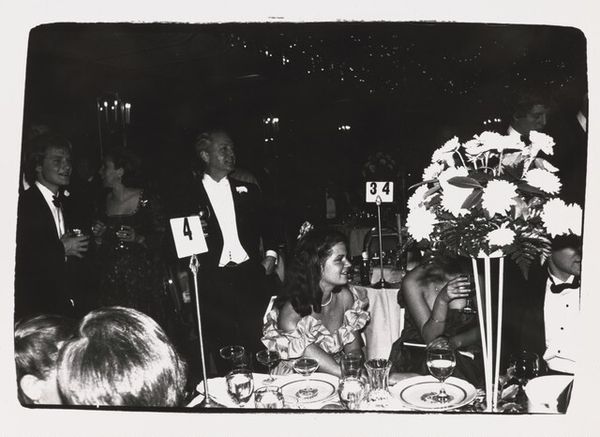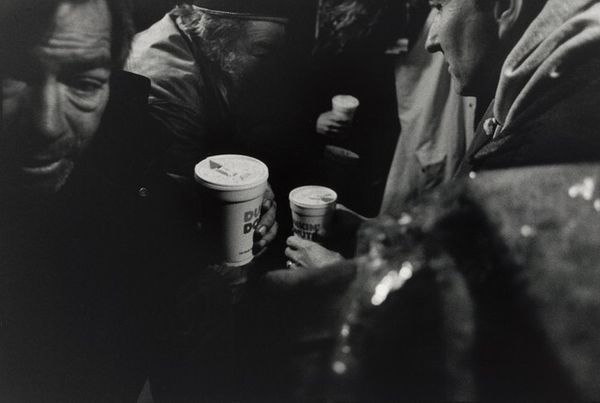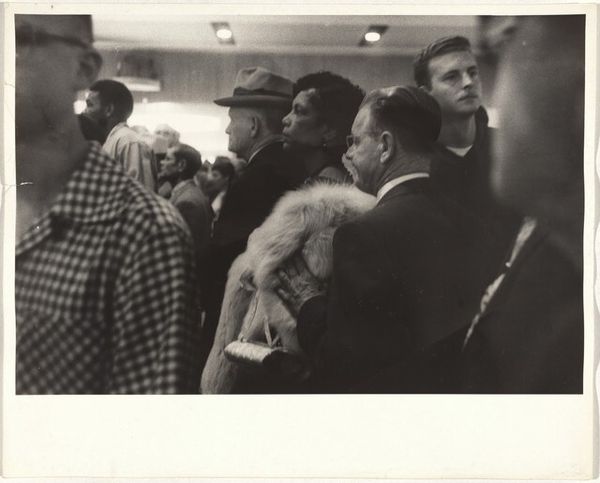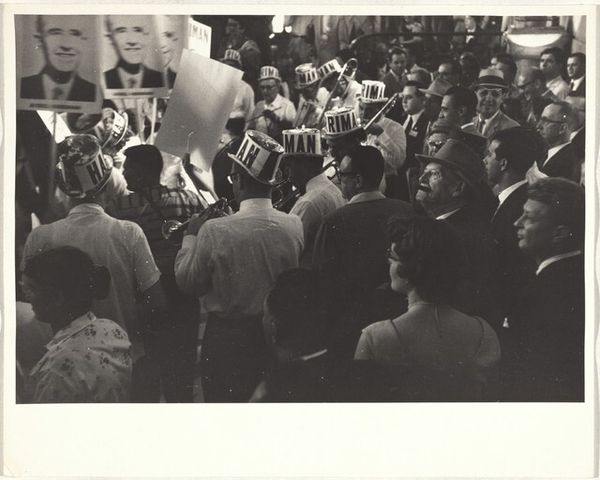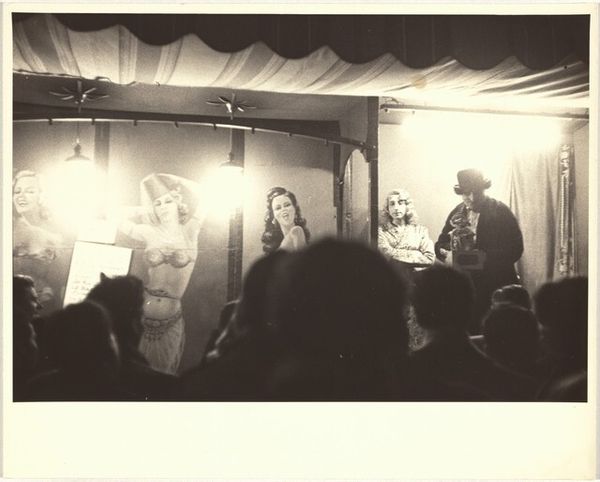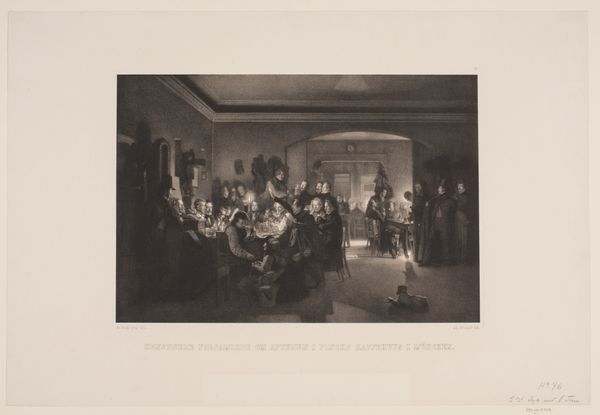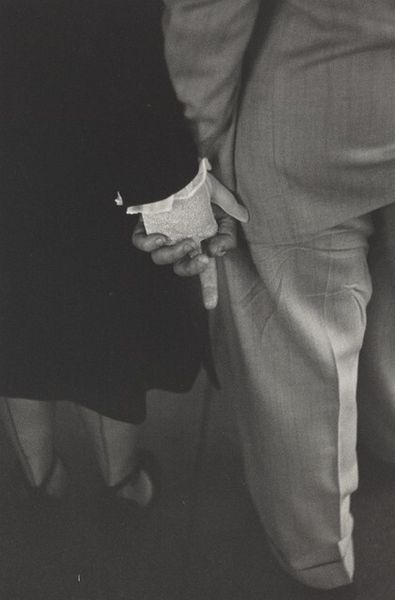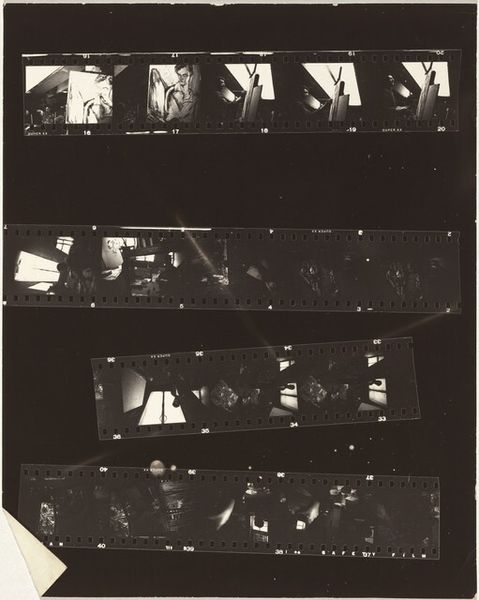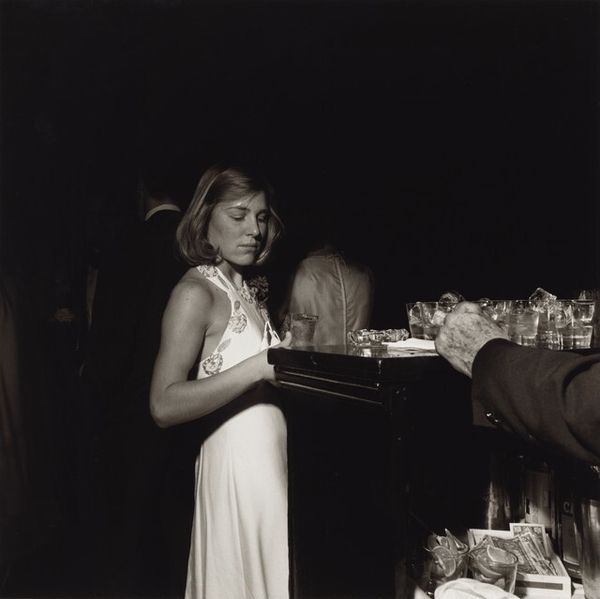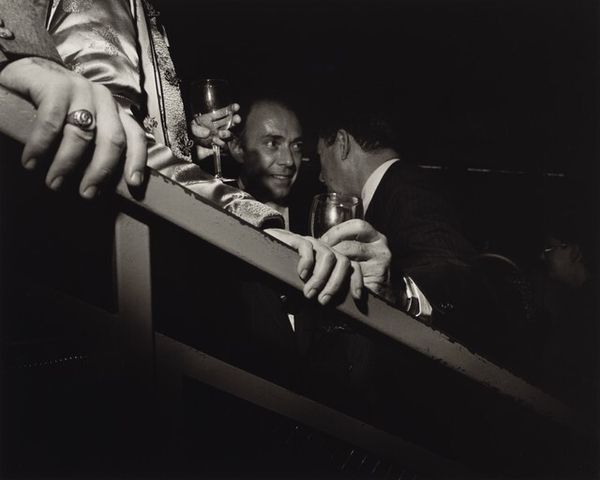
photography, gelatin-silver-print
#
portrait
#
black and white photography
#
social-realism
#
street-photography
#
photography
#
group-portraits
#
black and white
#
gelatin-silver-print
#
monochrome photography
#
monochrome
#
monochrome
Dimensions: image: 33 x 45.3 cm (13 x 17 13/16 in.) sheet: 40.3 x 50.2 cm (15 7/8 x 19 3/4 in.)
Copyright: National Gallery of Art: CC0 1.0
Curator: This is William Klein's "Toy Ball, Waldorf, New York," taken sometime between 1955 and 1989, a gelatin silver print. What are your initial impressions? Editor: My first thought? A kind of beautifully blurred chaos. Like glimpsing a high-society dream through a champagne haze. There's a restlessness to it, a feeling of constant motion. Curator: That blurriness is quintessential Klein. He embraced photographic "mistakes," challenging conventions. Look at the way the light flares around the figures. What does it suggest to you? Editor: The flares are like haloes, almost mocking these wealthy figures, especially when considered with the composition in a ‘Last Supper’ configuration. But at the same time, it immortalizes the dinner guests. Curator: Absolutely, that intentional blurring flirts with religious imagery but mocks wealth—Klein, influenced by street photography, aimed for realism, not glamour. Notice how the sharpness falls only on key faces, creating mini-narratives. What symbols emerge for you? Editor: The bow tie is essential: A symbol of constructed identity and societal expectation. And consider that it's blurred – a comment on its stability as a reliable signal. The candles could represent ephemeral beauty—or even social climbing. Curator: Beautifully put. And, of course, the gelatin silver print gives it a particular richness. But to go back, those halo effects you noted make them feel like relics now. Is it commentary or judgement on such figures? Editor: Maybe both. Klein presents them, but with that intentional grain and blur, he keeps them at arm's length. Almost daring us to look away, to see past the surface, despite it drawing you into their experience. Curator: So, it really holds the contradictions of desire and dissatisfaction inherent to the upper class, yes? Editor: It captures a very human—and culturally persistent—tension. The image invites me to examine how even our most revered traditions and institutions can feel frantic, and slightly absurd. It's still relevant. Curator: Precisely! A fleeting moment, captured and made eternal, laden with social and timeless symbols, the light reminding us they still haunt our lives.
Comments
No comments
Be the first to comment and join the conversation on the ultimate creative platform.

